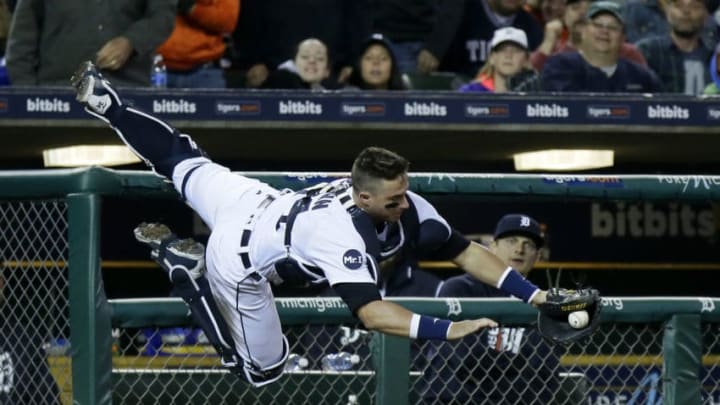
The projected starting outfield of Mikie Mahtook, Leonys Martin and Nicholas Castellanos are all represented here. Potential backups Victor Reyes and JaCoby Jones do not have enough big league experience to generate comparisons. Let’s start in left.
Mikie Mahtook: 1996 Matt Mieske
Mieske was a late bloomer who had the best season of his career in 1996 at age 28. The Western Michigan Alumnus hit .274 with 14 home runs and 64 RBI in a career-high 374 at-bats. Tigers fans will hope that Mahtook is ready for his breakout in 2018. The outfielder hit .276 with 12 home runs last season. He will look to build upon that and have a season that trumps Mieske’s effort in 1996.
Leonys Martin: 2017 Peter Bourjos
Martin and Bourjos made their big league debuts less than a year apart and at this point in their careers have very similar numbers. The way they have approached those numbers, however, has been quite different. Bourjos has consistently been a fourth outfielder, only accruing over 450 at-bats in one season, back in 2011. However, he has remained healthy and has seen at least 168 at-bats every season he has been in the big leagues. Martin has eclipsed the 450 at-bat mark three times. However, he only has one other season with more than Bourjos’ career-low 168 at-bats.
Still, the numbers remain similar. Bourjos hit .223 with five home runs and five stolen bases last season, numbers that Martin should surpass, provided he does not lose the center field job to JaCoby Jones or Victor Reyes.
Nicholas Castellanos: 1952 Willie Jones
Jones, like Castellanos, was just starting to hit his peak heading into the 1952 season. He was coming off two straight All-Star seasons and had surpassed 20 home runs and 80 RBI each year. Jones dipped slightly in his age-26 season, hitting .250 with 18 home runs and a 96 OPS+. Castellanos will hope to avoid a dip in performance next season. Coming off the finest year of his career, next season could be the year we see Castellanos become a bonafide star, far surpassing the numbers that Jones put up.
